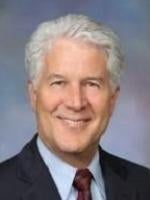Many major corporations have issued public statements of commitment to aggressively increase representation of African Americans in the workforce, particularly at the leadership and management levels. In response, the U.S. Department of Labor’s Office of Federal Contract Compliance Programs (OFCCP), which is responsible for regulating and enforcing federal contractors’ non-discrimination and affirmative action obligations, has notified several of those companies of its concern that their commitments portend use of race-based selection processes. The OFCCP has asked the companies to demonstrate that the actions they are taking do not constitute unlawful race-based practices.
While it is not clear what further actions, if any, the OFCCP may pursue against federal contractors in this regard, companies may accomplish the objectives they have announced without violating any laws. This article discusses the background underlying the OFCCP’s concerns and how federal contractors, and other companies, can increase diverse representation in their workforces fully consistent with existing law.
Recent Diversity and Inclusion Commitments
Diversity, Equity, and Inclusion (DEI) Programs have been part of U.S. corporate plans for decades. Beginning with the affirmative action requirements of Executive Order 11246 in 1968 for federal contractor workforces, DEI programs have progressed and evolved into often-sophisticated management tools to improve diverse representation at all levels, eliminate barriers to equal opportunity, and ensure the meaningful inclusion and integration of all employees in the workplace.
The deaths of Breonna Taylor and George Floyd earlier this year, and ensuing Black Lives Matter protests, ushered in a new urgency for DEI. Media, civil rights, and employee scrutiny of company racial equity policies increased dramatically. In response, many corporate CEOs issued public statements of support for Black Lives Matter, and for racial justice in general, in both the workplace and society. Many of the statements announced commitments to improve African American representation in leadership, management, and the overall workforce — including specific numerical goals and timetables (for example, 50 percent increase in African American leadership by 2025).
OFCCP Targets Federal Contractors
The OFCCP reportedly has sent letters to several federal contractors who had announced diversity goals, requesting the companies to demonstrate that their actions pursuant to their announcements will not be race-based. The OFCCP appears to be referring to prohibitions under Executive Order 11246 and the OFCCP’s implementing regulations, as well as Title VII of the Civil Rights Act of 1964, as amended, and U.S. Equal Employment Opportunity Commission (EEOC) implementing regulations.
Generally, those laws prohibit taking race into account in making employment decisions. Thus, the OFCCP is requesting the targeted federal contractors to prove that their actions will not be race-based — that is, will not give preferences to African Americans in hiring and other selection processes.
Achieving DEI Representation Goals
Most American companies, including federal contractors, continue to adhere to the “merit system” in employment; that is, selecting the “most qualified” applicant or employee for hiring, promotion, and other terms and conditions of employment. Indeed, the OFCCP regulatory scheme (which requires statistical analyses of “underutilizations” by race in all job categories and affirmative “good faith efforts” to eliminate the underutilizations) specifies that all employment decisions must be made on merit, and racial preferences cannot be applied.
Companies have learned that the optimal way of increasing representation of a racial or ethnic group is by broadening the recruitment terrain. This would include not only geographic expansion beyond the local labor pool, where possible, but eliminating “blind spots” such as (a) including Historically Black Colleges and Universities in the college recruiting process; (b) developing relationships with civil rights and other groups, such as the Urban League and Hispanic Chamber of Commerce, to assist in identifying qualified candidates; and (c) retaining recruiting firms specializing in diverse candidates. These are exercises in creativity. They can be especially effective in providing additional sourcing for qualified underrepresented candidates.
Moreover, there is a little-known legal mechanism for allowing race-based preferences in hiring. U.S. Supreme Court precedent dating back to 1979, followed by EEOC regulations, allows companies using a compliant Voluntary Affirmative Action Plan (AAP) to exercise race-based preferences to remedy historical underrepresentation (“manifest imbalance” in Supreme Court parlance) in specified job categories. Companies properly applying their compliant Voluntary AAPs will not “unlawfully” use race-based preferences. (As a practical matter, companies rely on their Voluntary AAPs not so much to utilize race-based preferences, but to protect them against allegations that they exercised such preferences through their aggressive DEI programs and practices. Companies and their hiring managers prefer to rely on expanded outreach and development programs to select “the most qualified” for all positions.)
Companies facing stubborn (and sometimes undiscovered) barriers to hiring and advancement of qualified minorities can consider the following strategic approach:
-
Recognize vested and competing interests fueling resistance to change.
-
Quantify the nature, analytics, and scope of the problem.
-
Identify barriers, real and perceived.
-
Be creative; treat DEI like any other business objective and find ways to eliminate barriers and enhance representation (like incentivized referrals).
-
Create aggressive, yet achievable, and legal methods, such as performance improvement goals, timetables, responsibilities, accountabilities, and progress monitoring.
-
Seek assistance from objective advisers for honest assessments and expert advice.




 />i
/>i

